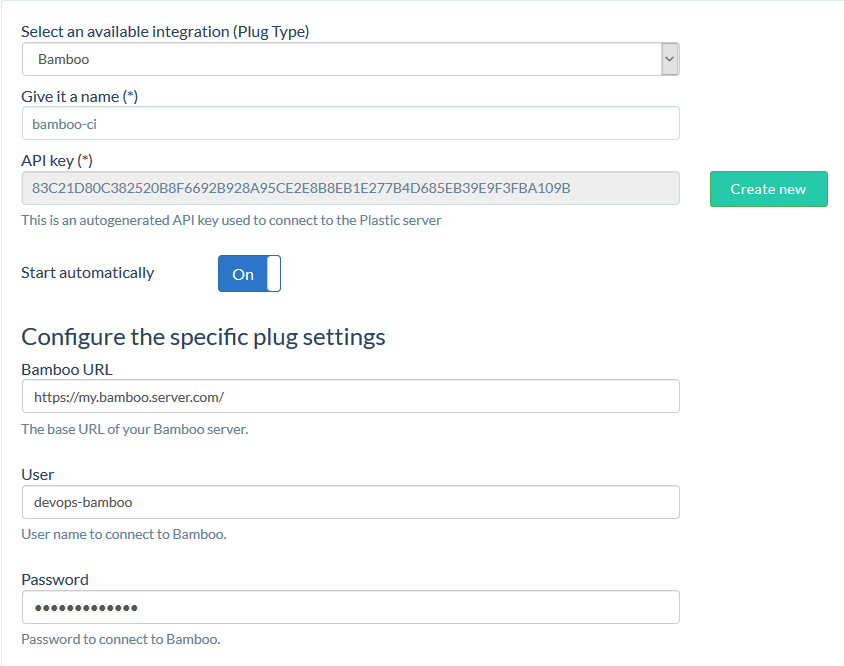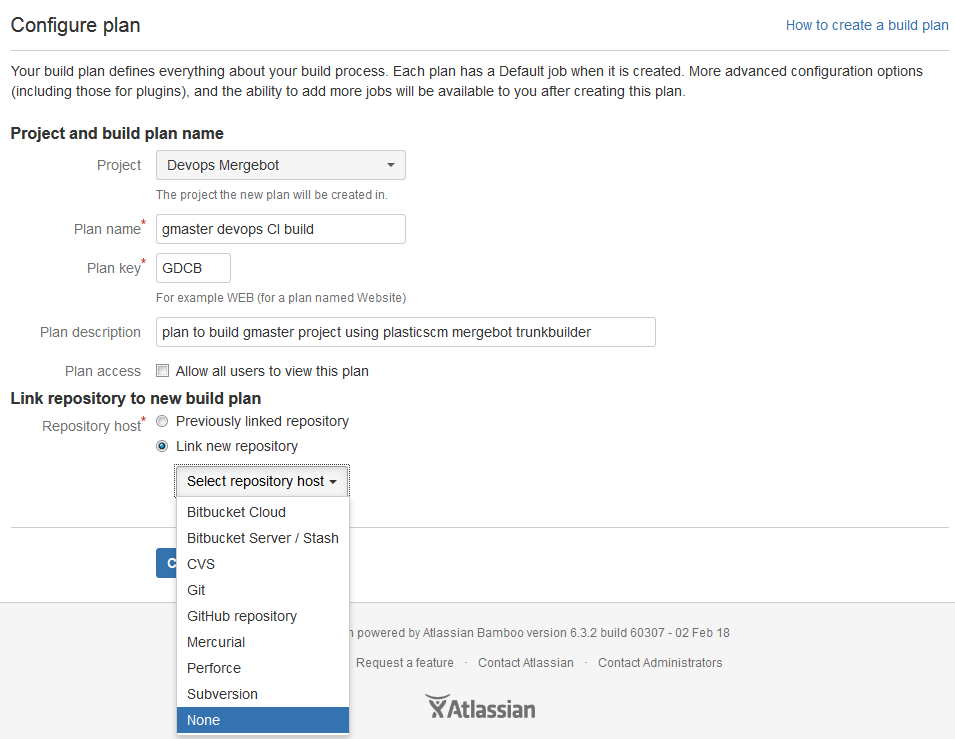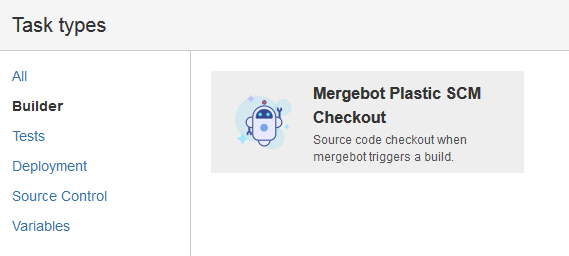The Bamboo plug provides an interface to perform actions in a remote Bamboo server for the Plastic SCM DevOps system.
This is the source code used by the actual built-in Bamboo plug. Use it as a reference to build your own CI plug!
The executable is built from .NET Framework code using the provided src/bambooplug.sln
solution file. You can use Visual Studio or MSBuild to compile it.
Note: We'll use ${DEVOPS_DIR} as alias for %PROGRAMFILES%\PlasticSCM5\server\devops
in Windows or /var/lib/plasticscm/devops in macOS or Linux.
If you just want to use the built-in Bamboo plug you don't need to do any of this. The Bamboo plug is available as a built-in plug in the DevOps section of the WebAdmin. Open it up and configure your own!
You'll notice some configuration files under /src/configuration. Here's what they do:
bambooplug.log.conf: log4net configuration. The output log file is specified here. This file should be in the binaries output directory.ci-bambooplug.definition.conf: plug definition file. You'll need to place this file in the Plastic SCM DevOps directory to allow the system to discover your Bamboo plug.bambooplug.config.template: mergebot configuration template. It describes the expected format of the Bamboo plug configuration. We recommend to keep it in the binaries output directorybambooplug.conf: an example of a valid Bamboo plug configuration. It's built according to thebambooplug.config.templatespecification.
To allow Plastic SCM Server DevOps to discover your custom Bamboo plug, just drop
the ci-bambooplug.definition.conf file in ${DEVOPS_DIR}/config/plugs/available$.
Make sure the command and template keys contain the appropriate values for
your deployment!
The Bamboo plug provides an API for mergebots to connect to Bamboo. They use the plug to launch builds in a Bamboo server and retrieve the build status.
When a mergebot requires a CI plug to work, you can select a Bamboo Plug Configuration.
You can either select an existing configuration or create a new one.
When you create a new Bamboo Plug Configuration, you have to fill in the following values:
Please make sure that you've installed our lightweight Bamboo plugin before you create
a new configuration for a server. You can find it in the client install
directory (%PROGRAMFILES%\PlasticSCM5\client in Windows, /opt/plasticscm5/client
in Linux or /Applications/PlasticSCM.app/Contents/MonoBundle in macOS),
inside the mergebot-zeroconf-plugins directory.
You'll also need to install a Plastic SCM CLI Client (version 7.0.16.2200 or higher) in the Bamboo machine. It's required to perform all SCM operations against the server (e.g. update the Bamboo Plastic SCM workspace). The user account running Bamboo will need a valid Plastic SCM Client configuration to contact the target Plastic SCM Server.
The lightweight Bamboo plugin makes it unnecessary to specify repositories in Bamboo. Instead,
add a Mergebot Plastic SCM step as the first one in your build configuration.
The mergebot will take care of the rest!
When you create a new Bamboo plan, leave the repository set as None.
Then, add a Mergebot Plastic SCM Checkout step as the first one
Finally, configure the build step if you need some fine tuning.
When the mergebot requests a new build run or an existing build status from the Bamboo plug, it calls the remote Bamboo API using the URL and credentials in the plug configuration.
When a user creates a new Bamboo plug configuration, by default it executes the built-in plug binaries using the values of the configuration. Then, it automatically connects to the Plastic SCM server through a websocket and stands by for requests. You can also choose not to automatically run that particular configuration if you don't want to.
If you have any questions about this plug don't hesitate to contact us by email or in our forum!




